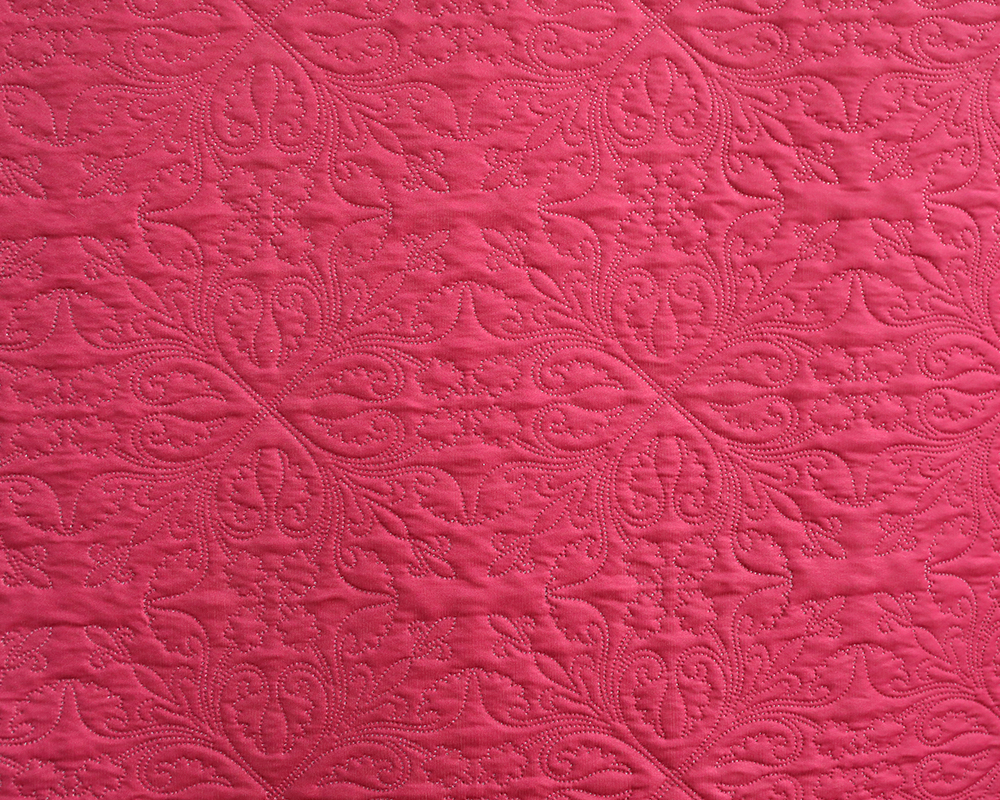Search...
Dyed Ultrasonic Fabric performs exceptionally well in the fashion and apparel industry, particularly in terms of durability and bond strength. Ultrasonic bonding, which uses high-frequency sound waves to fuse fabric layers without the need for traditional stitching, offers several advantages for garments, enhancing both their longevity and strength. Here's a detailed look at how these fabrics excel in durability and bond strength:
Ultrasonic bonding creates clean, precise, and durable seams that significantly contribute to the overall durability of garments made from dyed ultrasonic fabrics. The process works best with synthetic fibers such as polyester, nylon, and polypropylene, which are commonly used in the fashion industry due to their resilience. Key aspects of durability include:
Ultrasonic bonded seams are more resistant to fraying, unraveling, or breaking compared to traditional stitched seams. This makes garments made from dyed ultrasonic fabrics highly durable, even under frequent use. The bonds can withstand mechanical stress like pulling, stretching, or twisting, which is common in apparel.
In the fashion industry, it’s crucial that dyed fabrics maintain their color over time, even after exposure to environmental elements like UV rays, moisture, or repeated washing. Ultrasonic fabrics are often dyed with high-quality, heat-resistant dyes that do not fade easily. Additionally, the bonding process does not compromise the dye, allowing for long-lasting color vibrancy.
Ultrasonic bonded seams are highly resistant to breakdown during laundering, which is a critical factor in the fashion industry where garments undergo frequent washing. The heat and chemicals from washing machines, as well as the agitation, do not easily affect the bonded areas, ensuring the garments maintain their structural integrity.
Ultrasonic bonding provides superior bond strength compared to traditional sewing, making it ideal for creating durable and high-performance garments. Here’s how bond strength is a significant advantage:
The seams created by ultrasonic bonding are strong and can often outperform stitched seams, especially when working with synthetic materials. Traditional stitching can create weak points where threads might loosen or break over time, but ultrasonic bonds are seamless and hold up under stress. This makes dyed ultrasonic fabrics highly suitable for garments that need to endure movement, tension, and high usage.
Since ultrasonic bonding does not require threads, there is no risk of thread breakage or seam failure, which can often occur in heavily used clothing. This results in garments with stronger structural integrity and fewer weak points. The absence of thread also means that there’s no added bulk, which contributes to the overall smooth finish of the garment.
The bonds formed through ultrasonic processes are flexible, allowing garments to stretch and move without compromising their strength. This is especially important for fashion items like sportswear, activewear, and form-fitting apparel, where freedom of movement is essential. The fabric can flex and bend without the risk of seam failure, offering superior comfort and performance.
Ultrasonic bonding relies on heat generated from high-frequency vibrations to fuse fabrics together. This process creates bonds that are resistant to further heat and friction, making them ideal for garments exposed to such conditions. Whether it's garments exposed to body heat or external heat sources, the bonds will remain intact, ensuring the clothing’s longevity.

Beyond the durability and strength, ultrasonic bonding also offers aesthetic advantages that make it popular in fashion.
One of the primary aesthetic benefits of ultrasonic bonding is the creation of smooth, seamless edges. The lack of stitches gives garments a clean, modern look that appeals to contemporary fashion designs. This is especially advantageous for sleek, minimalist apparel where visible stitching might detract from the design.
Without the need for thread, seams are thinner and more lightweight, resulting in garments that are less bulky and more comfortable to wear. This also helps maintain the shape and drape of the fabric, enhancing the garment's overall look.
Dyed ultrasonic fabrics are increasingly used in various segments of the fashion industry, including:
The bond strength and flexibility make ultrasonic fabrics ideal for activewear and sportswear, where garments need to withstand high-intensity movement and stress.
Ultrasonic bonding allows for the creation of soft, seamless lingerie that is both durable and comfortable. The lack of visible seams enhances comfort, especially for close-fitting garments.For jackets and coats, ultrasonic bonding offers strong seams that can withstand harsh weather conditions, ensuring durability and protection from the elements.
In the fashion and apparel industry, dyed ultrasonic fabrics provide a perfect balance of durability and bond strength. The use of ultrasonic technology ensures garments have strong, flexible seams that can endure regular wear and tear while maintaining a sleek, stitch-free appearance. These qualities make dyed ultrasonic fabrics an excellent choice for high-performance fashion items that require both aesthetic appeal and functional resilience.

 English
English
 中文简体
中文简体
 Español
Español





.jpg?imageView2/2/format/jp2)






